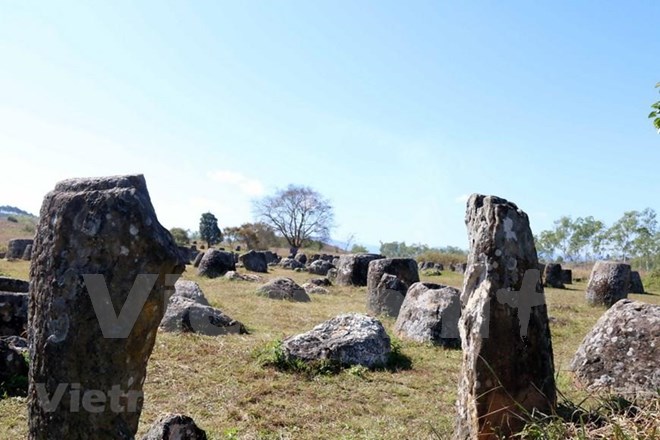Lao province calls for tourism investment to tap into new World Heritage
Mayor of Xieng Khuang province, Laos, Bounton Chanthaphone has called for both domestic and foreign investors to develop tourism in the province to tap into the Plain of Jars, which was named a World Heritage site by UNESCO earlier this month.
 |
| A view of the Plain of Jars, which is named a World Heritage site by UNESCO. (Photo: VNA) |
Xieng Khuang also plans to educate the locals on the value of the Plain of Jars and how to together preserve the megalithic archaeological landscape, Chanthaphone told a news conference held by the Ministry of Information, Culture and Tourism in Vientiane on 25 July to announce the UNESCO recognition.
The UNESCO World Heritage Committee declared the Plain of Jars as a World Heritage site on 6 July during its 43rd session which took place in Baku, the capital city of the Republic of Azerbaijan from 30 June – 10 July.
Laos had made many efforts over the last 20 years to conduct field surveys and complete nomination applications to submit to the UNESCO World Heritage Committee for the Plain of Jars to achieve the status, according to the minister.
He thanked countries and international experts who have supported Laos in this two-decade process.
The Plain of Jars, located in Xieng Khuang Plateau, northeastern Laos, gets its name from more than 2,100 tubular-shaped megalithic stone jars used for funerary practices in the Iron Age, according to UNESCO.
This serial site of 15 components contains large carved stone jars, stone discs, secondary burials, tombstones, quarries and funerary objects dating from 500 BCE to 500 CE. The jars and associated elements are the most prominent evidence of the Iron Age civilisation that made and used them until it disappeared, around 500 CE.
It is Laos’ third World Heritage after the old Town of Luang Prabang, inscribed in 1995, followed by Vat Phou and Associated Ancient Settlements within the Champasak Cultural Landscape in 2001.
(Source: VNA)